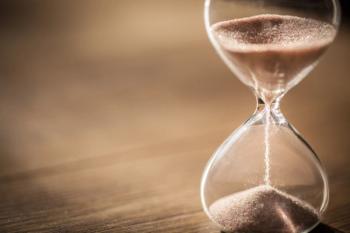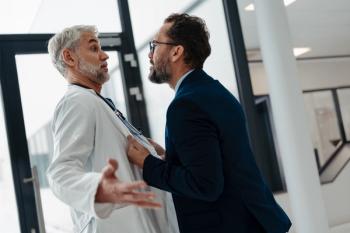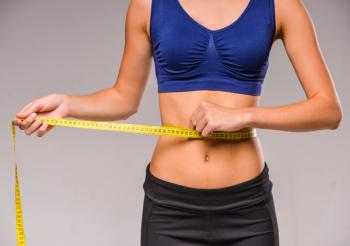
Jeweled Net: Virtual Therapy, Real Lessons
Look for the light, magnify it, and reflect it back.
COMMENTARY
In Mahayana Buddhism, the idea of a net or grid of saving power surrounding and interpenetrating all things is reflected in the metaphor of Indra’s net. There is no single source point from which it all arises. Every jewel is intimately connected with all other jewels in the universe, and a change in one jewel means a change, however slight, in every other jewel.
I am not actually a Buddhist—just a psychiatrist with a penchant for metaphor. I had come across the story of Indra’s net in 2019, around the same time Jimmy Eat World released their album Surviving. Every few years over the past couple decades, Jimmy Eat World replaces a sizable chunk of my thoughts with their song lyrics for the first few weeks after each new album they release. In 2019, reading about Indra’s net sparked an association to their song “Diamond”:
When I find myself awake, I put my thoughts down on a page
Half asleep, I’ll make a list, then read back all my greatest hits:
Should meditate, should work out more
Should read until my brain gets sore
Meet someone, go far away
Try being socially less strange
That’s how a diamond grows, you give yourself the right chance over time
Don’t believe them if they try to sell you something quicker
Music and Mirrors
When I was a kid, for a decade and a half, I took dance lessons. As a senior in high school, I performed a dance solo to the song “The Music and the Mirror” from my favorite musical, A Chorus Line.
“All I ever needed was the music and the mirror, and the chance to dance for you,” an auditioning dancer pleads to a casting director. Then the music abruptly changes to mark her dance solo. She turns around toward a line of mirrors near the back of the stage to dance, leading the audience to watch not her body, but her reflection. At 17, I left it all on that stage, popping with jazz hands, in homage to the show that made me want to move to New York City to become a dancer.
I did move to NYC a decade later, not to dance on Broadway, but to complete my residency training in psychiatry. Nevertheless, over the course of my career as a psychiatrist, mirroring has been one of the most essential tools I need to perform at my best. After my
Seeing the Light
What if we all knew there was a hidden safety net below us, a jeweled web to lift us when we hit rock bottom? Can anybody else see it? I can, sometimes. And it is beautiful.
I started a private telehealth practice after the
The first item on the renovation list, after replacing the roof, is tearing down a couple walls to make a yoga studio. I have found myself fantasizing about using the same space as a dance studio, for myself if no one else. This would require the studio to have a large wall mirror. I have been to some yoga studios with mirrors, some without; they have their pros and cons in that setting, so I have been waffling a bit on whether I want one. Today I decided, yes, I definitely want a mirror.
To explain why, I will have to rewind a bit to last December. I evaluated a new client in my
I diagnosed her with
When I asked in her initial interview about childhood sexual abuse, she told me that when she was 6 years old, the man her grandmother had married molested her. Afterward, she had told her grandmother it hurt “down there.” Her grandmother stood up, took a can of Crisco out of the kitchen cupboard, and rubbed it on my client as a soothing balm. No words were spoken about it, that day or any to follow, but her grandmother never let her out of her sight again when she came to visit. As I took notes during the interview, under the developmental history section, I simply jotted down the word “Crisco,” knowing I would recall her story immediately when I sat down to write her evaluation note. The gesture seemed so tender and yet so heartbreaking; so careful and yet not careful enough.
A couple months into our work together, the client emailed me to let me know she had just found out her own 6-year-old daughter had been molested by her father, a man my client had broken up with several years prior while she had been living in Georgia. They had no formal custody agreement, but my client allowed her daughter to stay with him in Florida for a couple weeks every summer. She was devastated she had “let this happen” to her own daughter, despite it being one of her greatest fears, given what she herself had experienced at that same age.
At her first visit after that email, I invited her to elaborate about what her daughter had told her, how it all came to light. She took a deep breath and told me, “You’re the first person I’m going to tell this to.” I will not retell an unspeakable story here.
She kept it together until she told me something her daughter had said: “I thought parents are supposed to protect us.” I am not sure, even now, she understands her daughter was not talking about her. It is clear to anyone with just enough distance from this mother’s tortured soul that her daughter was referring to her other parent—the father who had abused her.
She broke down a second time during the interview, when she brought up the upcoming fourth anniversary of her mother’s death. Her mother had been her best friend, and she told me how desperately she needed to talk through this with her, like they would talk through every problem together. “My mom did it all. She was everything for everybody. I need her now.”
On this particular day, the uniquely-telehealth therapeutic quirk was around camera positioning. At this point in the interview, while my client spoke of how she longed for her mother, her camera was positioned in such a way that the light from the lamp behind her glared like a radiant burst that filled the entirety of the rest of the screen. I saw only her face and that light. And I listened to 2 voices at once—my client’s, telling me her terrible story, and the one coming from the light behind her, holding space for it for all 3 of us. I could see it, that glaring light behind her. But I knew she could not.
After she was done speaking, I waited a moment, then pointed out how her lamp was affecting her appearance in the Zoom screen. She chuckled and apologized, reaching to adjust her camera, but I stopped her and told her that for me, the light behind her helped me feel her mother’s presence very powerfully. She started to cry. It was simple. I saw light. I reflected it back to her. I did not feel like a medium, but I also did not feel like a psychiatrist. I was just a mirror. I sort of started to cry too.
I told her what I could hear her mother trying to say from behind her. Her mom was saying, as she told me how she longed to speak to her: Girl! You’re talking to me right now!
Her mom was saying, No one can be everything for everybody. But look around. We do the best we can. We lift and we are lifted. Look around.
Her mom was saying, look behind you, you see that light?
Look below you, you see that diamond?
Look around. We are a jeweled web. We are everywhere. We are everything.
Dr Dykema is the cofounder and Clinical Director of Uncaged Minds Detroit, a mental health and wellness resource for low-income Detroiters, with a special focus on the LGBTQ+ community and those impacted by the criminal justice system. She is also a part-time law student and Public Psychiatry Fellow at Wayne State University.
Newsletter
Receive trusted psychiatric news, expert analysis, and clinical insights — subscribe today to support your practice and your patients.

















